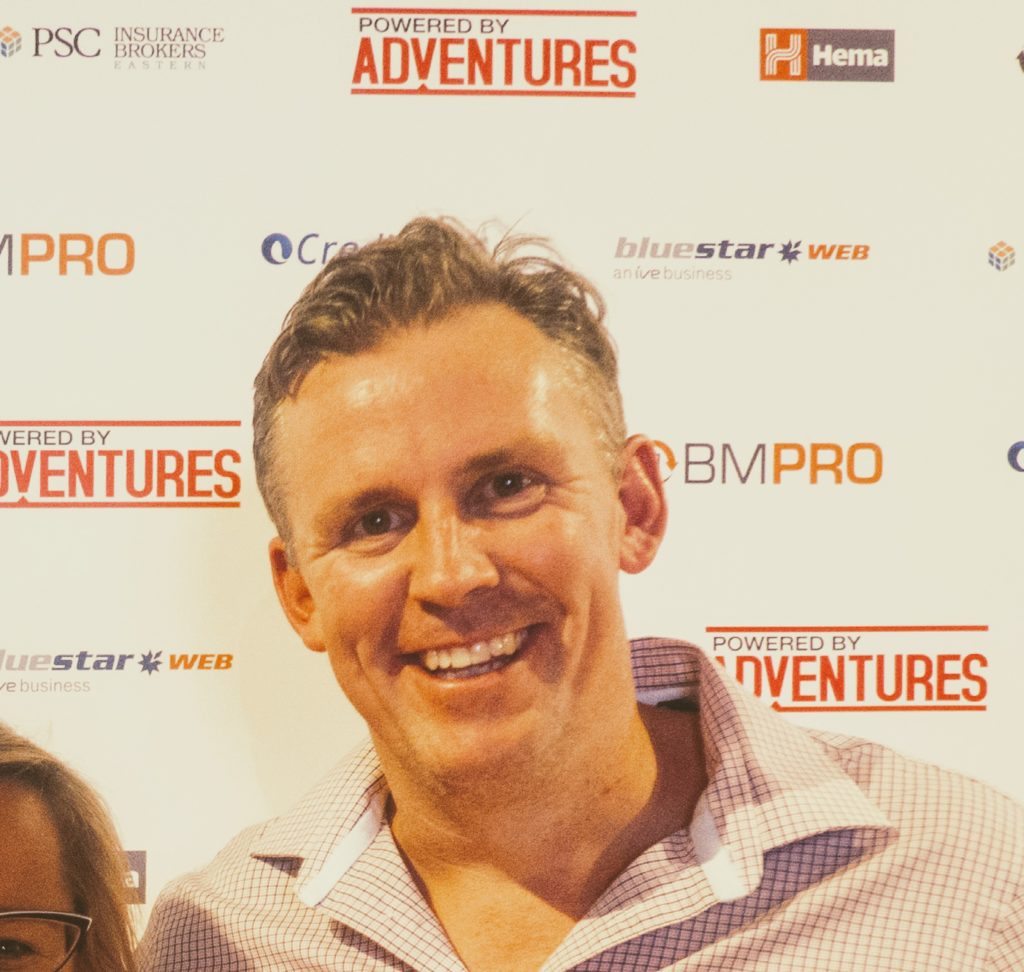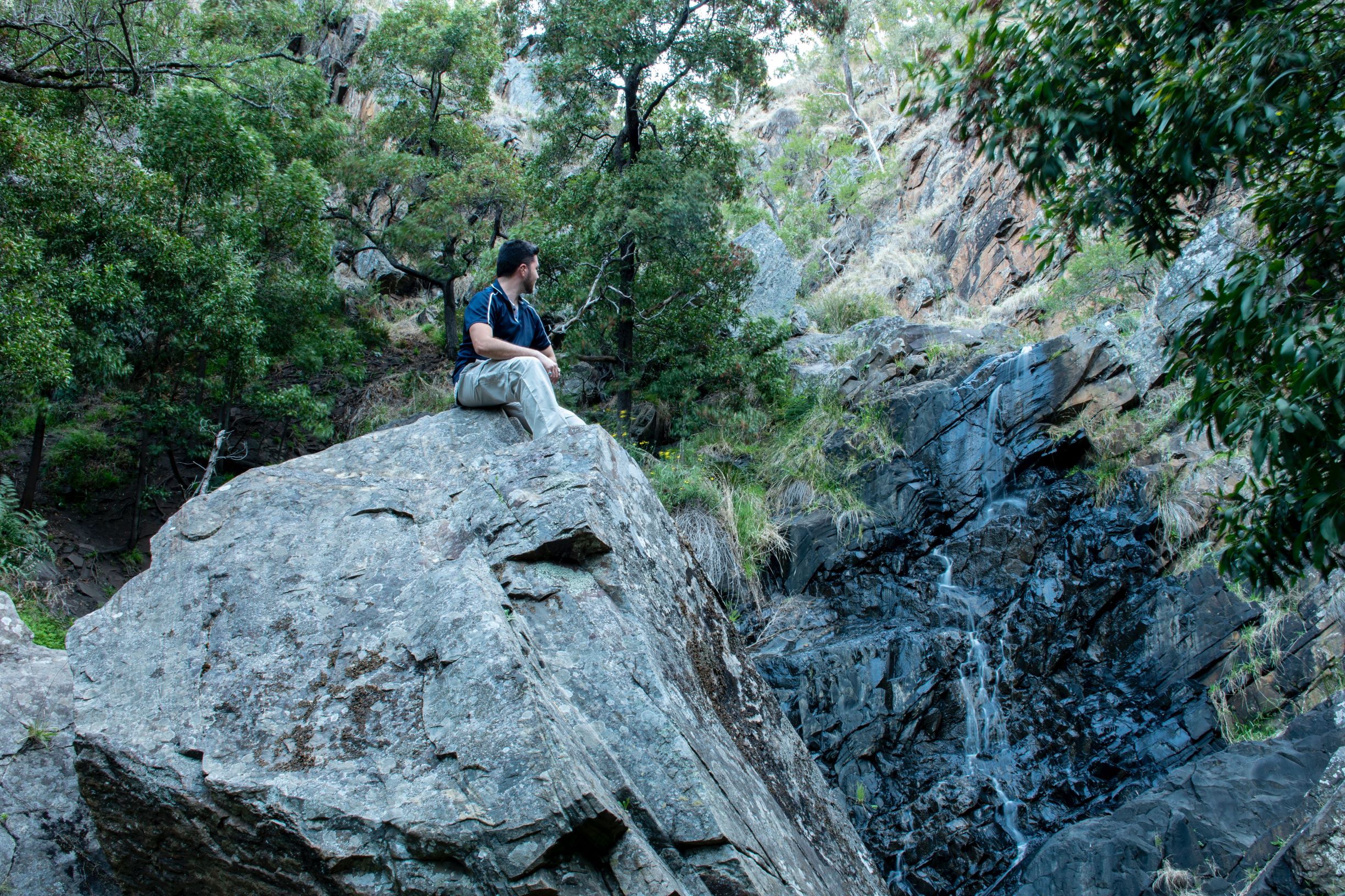“What do publishers do really well? They produce amazing content on a subject that they’re experts at. And that’s not where the priorities have been for a lot of businesses over the last few years. The investment isn’t going into the content production it’s going into the platform.” Emprise Group Holdings CEO Rob Gallagher gets to the bottom of how the publishing industry needs to change to be successful into the future.
Emprise Group Holdings is a media business specialising in the delivery of content and mapping for the outdoor/adventure travel sector. The company produces print magazines with digital platforms, mapping services (both GPS and printed maps) via its Hema Maps division, and events and content marketing services for its clients.

After a career in digital marketing, Emprise CEO Rob Gallagher formed the company in 2016 by leading the acquisition of Adventures Group from Bauer before then merging the multi-channel magazine titles with the Hema Maps business, with the aim of being the premiere guiding partner for Australian adventures.
The company’s extremely successful flagship publication, Caravan World, recently celebrated its 600th edition and has experienced growth in circulation since the COVID-19 outbreak.
TMSN Editor Lyndsie Clark caught up with Gallagher to chat about the importance of understanding the value chain for advertisers, the core principles of successful print publishing, and re-working distribution methods.
Lyndsie Clark: I’m particularly interested in how you’re navigating the COVID-19 pandemic because you have adventure and outdoor brands. How are you making sure your content is relevant and how are you engaging with your audience right now?
Rob Gallagher: We haven’t really changed the style of content significantly but we’ve been respectful of what’s happening in the broader market. The reality for us is we’ve been impacted, probably for the last six months, because of macro issues. Australia’s been through bushfires, floods, etc. Those things were happening anyway and then COVID-19 hit, and off the back of it the isolation restrictions.
Our brands all have a different audience and a different tone of voice. Parts of the market are responding well and other parts are slow. But what we’ve seen, using Caravan World as an example, is actually an increase in its circulation.
A lot of our content is built around the lifecycle of a purchase, be it a caravan or a camper trailer or a trip that our readers are going to take. We’ve had good growth in subscriptions because the reality is that at the end of this, this is what people will want to do; they’ll want to get out and have these experiences again. So we’ve been respectful of the situation but not necessarily changed the core of what we do too much.
LC: What about your advertising clients? How are you working with them to get through the pandemic?
RG: Our core principle is always to try and understand the value chain for our clients: what are their business challenges and what do they need? Right now, we’re trying to deliver something that fits their current needs, and some of that is fundamentally something cheaper than our usual offering. So the question then becomes, how do we produce something for them at a lower cost that still provides an output during COVID-19?
We’re very deliberate in the way that we sell advertising, simply put we don’t discount. That’s what I see everyone else do and it’s just a race to the bottom.
Rob Gallagher, CEO, Emprise Group Holdings
When we bought the business, we decided on a principle of transparent pricing. Within our competitor set is Google and Facebook, and they have structured pricing, it’s all transparent. It’s all clear. That’s what we’re fighting against.
When we say something is worth $2,000, but we’ll give it to you for $1,000, what we’re saying is it’s worth $1,000. So price it at $1,000, and people can buy or sell based on whether they think it’s valuable or not.
One of my first meetings after getting into publishing was with a potential client in New Zealand. Within the first five minutes of the meeting, the client said that they were worried about having the meeting. When I asked what they meant, they said that it was because I was a publisher – and their understanding that publishers are just there to push advertising sales.
It was a lightbulb moment for me. From that point on, the conversation has always been around how we demonstrate value. How do we make sure that what you’re selling has a value to the market? And then if it doesn’t, we have to change, not try and get the sales people to be more pushy.
So offering a more affordable option right now means working with our clients in other ways. This month in Caravan World we put together a showcase page – which is not a review, so we don’t have to go out and take the review – it’s information on a product that’s produced in a more efficient manner. It gives our clients a benefit but it’s less costly for everyone to do. So that’s the type of thing that we’re trying to implement.
LC: Less transactional and more working with the client.
RG: Yes. That’s been at the core of our business from day one. If you invest in the content, and you’ve got a strategy around how your content works in the marketplace, then your clients will afford you a certain level of advertising or content spend.
I think some publishing organisations have found the blurring of advertorial and paid content versus editorial hard to understand. But we approach it as being very black and white.
Anything that’s in the magazine is credible independent content, done for the reader. Our clients can request whatever content they like, but we’re not going to put our name on it even if we’re producing it for them to a brief.
There is paid content that we’ve produced for clients that we’re quite happy to publish under our magazines brands because the article aligns 100 per cent with our opinion and they accepted we would be critical. Whereas there have been other times where clients have asked us to produce something and we’ve declined. As soon as you do that, your content is 100 per cent white label.
LC: Do you have any particular messages to readers and clients at this time?
RG: It’s definitely varied based on brand. Unfortunately we had to postpone Outdoor magazine because that whole market shut down. That’s been the market that has been the most negatively impacted for us. But with our Caravan World, Camper Australia and Trade-a-Boat titles, we’re looking to help grow category again.
There’s a great opportunity in trying to redefine the new normal. There’s a lot of things that will change in the markets in which we operate, in terms of buyer patterns and buyer behavior.
Rob Gallagher, CEO, Emprise Group Holdings
We’re working with our readers to understand what they need, and working with our advertiser base to make sure that the lifecycle of the customer becomes simpler to navigate, particularly around how people can access and purchase their product in an environment where they might not be able to exhibit at a caravan show or boat expo.
LC: Do you have any particular short-term goals that you want to accomplish for your brands during the pandemic?
RG: We think that one of the most important things to focus on for any independent and small publisher, particularly with the merger of Bauer and Pacific, is distribution.
I think the existing framework is challenged. My view is that magazines aren’t a perishable item. So the one-month cycle where they basically get pulped after that period of time is not necessarily how the consumer views the product. So redefining distribution is a really important one for us.
We also want to work on our digital versions. I believe they attract a different customer but still a valuable customer. We want to look at how we can have the print and digital working in unison, rather than what some other brands have done where they’ve just gone purely digital.
Other than maximizing our opportunities around distribution, our short-term goals for each brand are different. We want to celebrate Caravan World’s 50th anniversary in a couple months. And we want to rebuild the markets that we operate in with the support of our advertisers.
LC: With distribution, I think you’ve got an advantage over a lot of other publications because you’ve got such a loyal following in Caravan World, for example. My father-in-law subscribes and he keeps each edition to go back to…they’ll sit in the toilet for a couple of months. It’s beautiful to see actually.
RG: And that’s why it is frustrating to watch this churn cycle of the way distribution has been structured. It’s all about volume, so it only works if it’s done in a certain way.
LC: Where do you think that B2C or special interest magazines are headed beyond COVID-19?
RG: I’ve been trying to work in the background for a long time in terms of getting attention on changing models. I think there’s lots of businesses that have their head in the sand around things like distribution and hoping that the advertising dollar will be able to be sustained without a really clear go-to-market strategy.
The brands that have succeeded in recent times from a publishing perspective are those that are producing branded content, and those that are pushed out to an audience for a specific purpose.
The reality is good content will sell. That’s always been our belief; that’s why we bought the business. That’s why we merged with the Hema business. It was really around making sure that what we produce is really good content that is presented in a way for the consumer to interact with properly, and meet their needs.
Rob Gallagher, CEO, Emprise Group Holdings
I think that’s the publishing principle that everyone has lost sight of.
LC: Yes, definitely. And it’s a shame that marketers get so caught up in measuring and being able to track ROI over leveraging the unique audience and expertise of a publishing brand.
RG: I come from a digital marketing background – my whole work life before getting into the publishing space was digital – so it was ironic when we bought a print magazine company. What I bought into is the fact that it’s actually a different conversation that you’re having with a reader that’s really valuable. With print, you have the ability to have something that you can trust with a tangible value to brands. I know there’s some great brands online as well, but it’s a different experience.
I think it gives the consumer confidence if you’ve got a multi-channel brand with a purpose that you can stand behind, and its brand values and content reflect that.
The reality in my view is that traditional publishing models have to evolve and COVID-19 will help accelerate this evolution. There are a lot of publishing businesses that aren’t sustainable and won’t survive COVID-19, and then there are businesses that have a plan and a clear strategy that will see them come out the other side with a well-defined business and understanding of their service for their readers and clients.
Fundamentally, since the global financial crisis (GFC), the publishing industry in a print sense has not had a clear direction. It’s been muddied by the need to adapt to a digital future.
Five years ago, Outbrain and those types of platforms were the key monetisation tool for some sites, and all that was doing was presenting subpar or unrelated content into your content feed, which took away from your core proposition.
What do publishers do really well? They produce amazing content on a subject that they’re experts at. And that’s not where the priorities have been for a lot of businesses over the last few years. The investment isn’t going into the content production it’s going into the platform. I think that’s where the disruption has really come from: not necessarily knowing exactly what a publishing business is.
LC: How do you think the relationship between print and digital channels will change with the new normal of COVID-19?
RG: I don’t think COVID-19 will have any impact on the connection between print and digital. Our job as print publishers is about making sure that we can demonstrate the value in print. That’s the perennial challenge for the media industry at the moment: making sure it’s got a tangible value in the media mix.
The same as with the post-GFC period, over the next six months publishers will see a shrinking of advertising budgets, and an expectation of better return on investment. Looking at it in a macro sense, that’s where magazine publishing fell off a cliff at that point in time, because it was the darling of the media space in terms of getting good returns but didn’t have a measurement flow.
I think in the next six to twelve months when the economy’s challenged, it’s going to be up to the whole of the publishing industry to be able to present a compelling explanation of what print does as part of a client’s media mix. Almost educating the market in another way, which I don’t necessarily think we’ve done a great job of in the past.








Excellent article. Thanks Lyndsie and Rob. Agree wholeheartedly re value and distribution and having a good print + digital mix to offer clients.